I finally had a chance to play some more with piping cold process soap flower embeds. I’ve tried the traditional (metal) Russian Piping Tips and didn’t have the best of luck. It was a combo of recipe consistency and technique. They take some practice and I just didn’t play around with them enough.
(Disclosure: Some of the links below are affiliate links, meaning, at no additional cost to you, I will earn a commission if you click through and make a purchase.)
(psssssssst! We have a new eCourse dedicated to all things piping! Learn to pipe cupcake soaps, on loaves, individual flowers and more in Piping Perfection!)
I did find these tips from the craft store that are similar to Russian Piping Tips. They are made by Wilton and are called Easy Blooms. They allow you to create a flower with one squeeze. Here they are on Amazon. There are two flower designs that come in two sizes. I used the smaller tips to create flowers that were about an inch wide, perfect for embedding on soap loaves.
I also reformulated my recipe to create a soap that stiffened up nicely and held it’s shape when piped. This recipe is palm-free and vegan. It worked great!
The Perfect Piping Cold Process Soap Recipe
Base Oils
- Coconut Oil (76 deg) – 90 grams (30%)
- Cocoa Butter – 45 grams (15%)
- Olive Oil – 120 grams (40%)
- Avocado Oil – 30 grams (10%)
- Castor Oil – 15 grams (5%)
Lye Solution (5% superfat)
- Water – 84 grams
- Sodium Hydroxide – 42 grams
Additives
- Lemongrass Essential Oil – 20 grams (or leave unscented if you don’t know how you’ll scent your completed loaf)
- Mica – I used Flirt, Voodoo, Twighlight, White and Flashdance from MadMica.com and Plum Dusk from BrambleBerry.com
Let’s create our piped flower embeds! If you are new to soapmaking, please download our FREE soapmaking guide!
Step 1: Create your lye solution. Weigh out the sodium hydroxide and water into two separate containers. Slowly sprinkle the sodium hydroxide into the water while stirring. Be sure to stir in a well-ventilated area and wear your safety goggles and gloves. Set your lye solution aside to cool down.
Step 2: Prepare your oils. When working with cocoa butter I always melt it first by itself. It has such a high-melt point and requires a TON of heat to melt. I don’t want all of my oils exposed to that much heat, requiring them to cool down before I can soap. I melt the cocoa butter and then add the coconut oil. Stir to melt the coconut oil into the melted cocoa butter. If you need to heat it a bit more to completely melt the coconut oil, then heat a bit.
Step 3: Add the liquid oils to the melted coconut oil/cocoa butter. Stir.
Step 4: Add the essential oil (or fragrance oil).
Check your temperatures.
Take the temps of both the lye solution and oil mixture. I like to mix when they are both anywhere from 80-95 degrees F. If they are hotter, your soap might set up too quickly and not give you enough time to pipe. Lower temps help to slow the process down and give you enough time to pipe.
Step 5: Once your temperatures are in range, pour your lye solution into the oils and bring your soap to trace.
Step 6: Add your color. I added about a teaspoon of Flashdance Mica. Blend.
Successfully piping soap is all about the consistency of your mixture. You don’t want it too loose or it will slump once piped. And you don’t want it too thick that it won’t push through the piping tip.
This is too loose.
This is just right. It is much firmer and holds it’s shape if piled up in the container.
Time to pipe!
Prepare your piping bag. Cut off the tip of the bag and insert the piping tip. Fold the top of the bag over and load with soap. Twist the bag to close and to push the soap down towards the tip.
I only used about half of this mixture with the smaller rose tip.
You can test a little out into your cup to check the consistency. If the soap slumps, it is not ready. If it holds it’s shape, you are ready to pipe!
Pipe your embeds! This part takes some practice. I found that with this tip, squeezing quick and hard to start the rose and then pulling up slowly while releasing pressure created the perfectly piped rose. Practice different squeezes and variations of (fast/slow) pulling up of your tip. You’ll soon find what works perfectly.
The great thing is that if you pipe an ugly flower, you can simply scoop it up and add it back into your bag if you want to try it again.
Pipe as many as you want! Like I mentioned above, I piped half of this pink mixture using the smaller rose tip.
Once done with these, I added some plum dusk mica from Bramble Berry to my remaining mixture to darken it up. I used the other tip to pipe more flowers.
I didn’t count the embeds to see how many it made but it definitely made enough to cover the top of a 10″ silicone loaf mold.
I wanted to some more colors so I made a whole new batch of the recipe above and piped two more colors.
This gave me four colors total and enough embeds for two 10″ silicone loaf molds.
For this next batch I used Voodoo Mica for the rose buds and a mixture of Twighlight and Voodoo for the other tip.
My mixture this time was looser than my first mixture and gave me more of a closed-bud look. 🙂 But I still like it!
Once you pipe your embeds allow them to harden overnight. I sprayed mine with alcohol to prevent ash from forming.
Next blog post I’ll show you how I created a loaf using these adorable piped embeds!
Here they are the next day all laid out and ready to decorate a loaf! These tips make perfectly-sized embeds. They are about an inch in width, which is how thick I cut my soap. I’ll share more in the next blog post.
UPDATE: Check out how to embed them on top of a loaf!
Please share on Pinterest! Thank you! 🙂

Happy Soaping!
-Amanda Gail


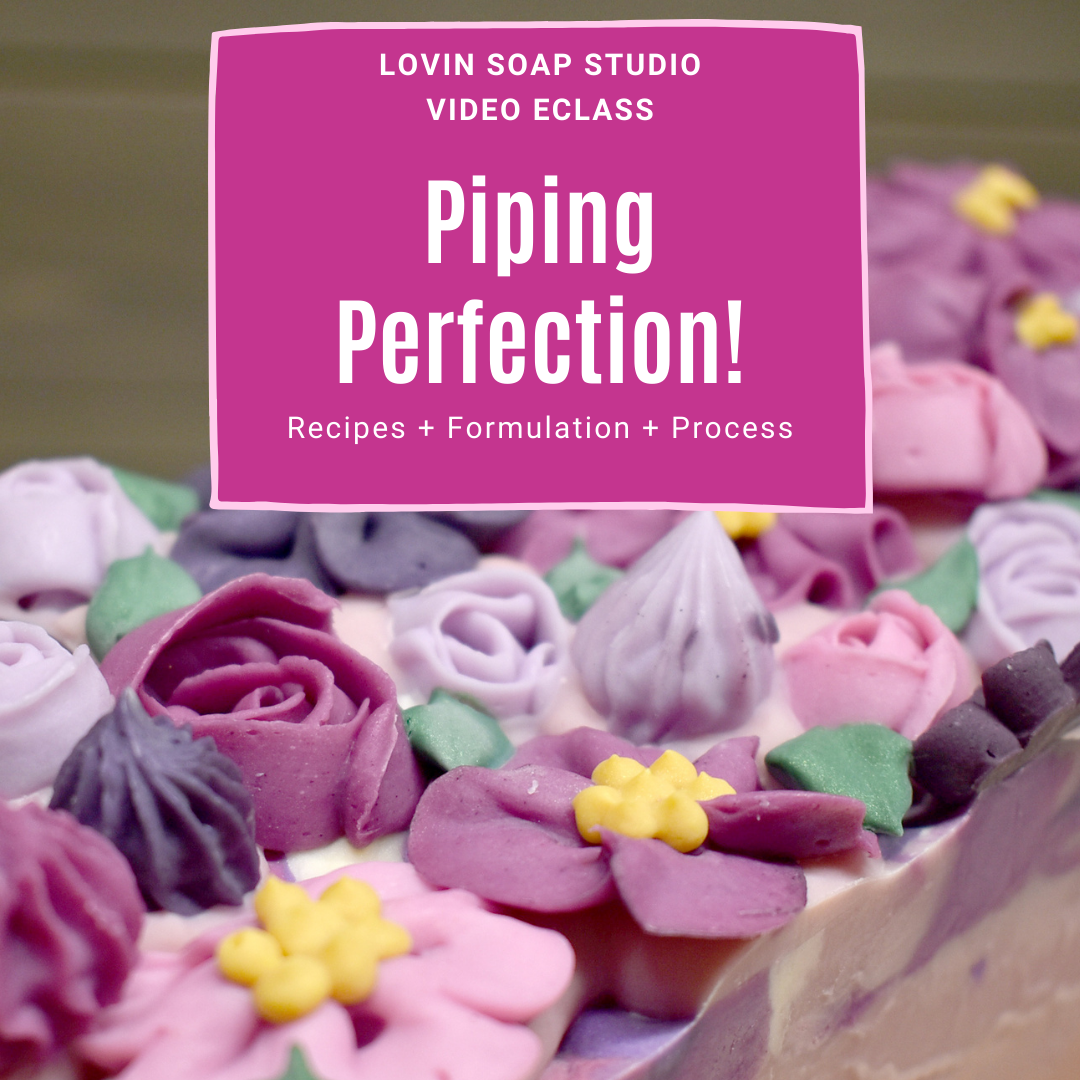
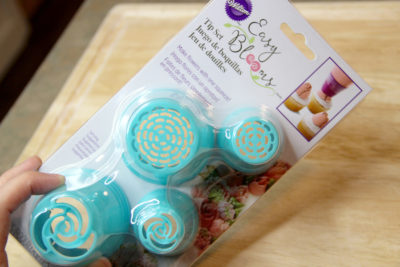
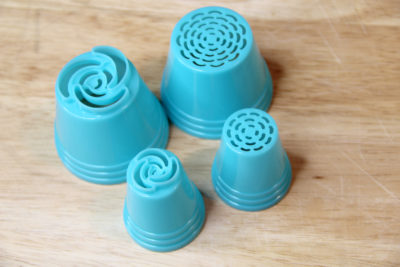
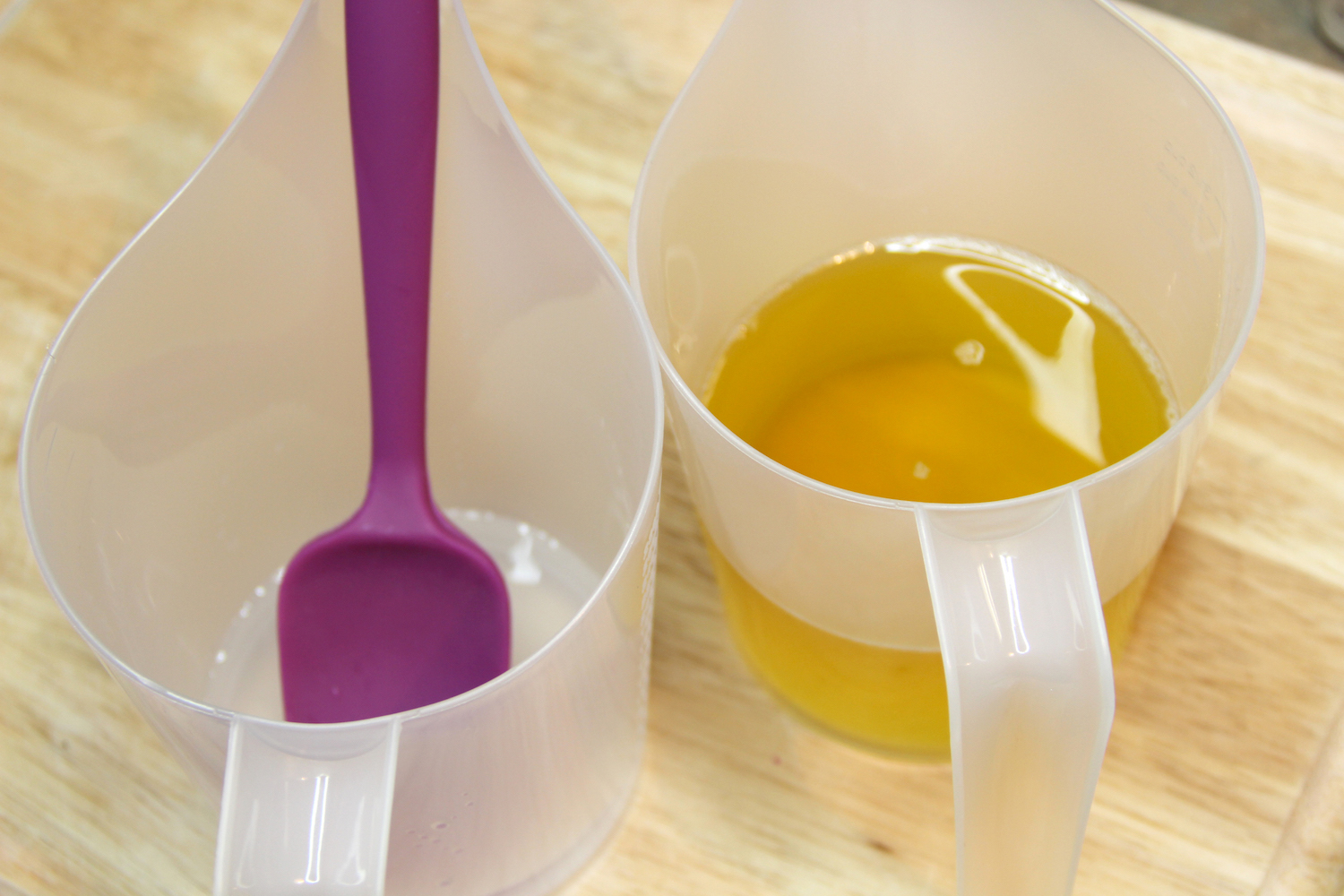


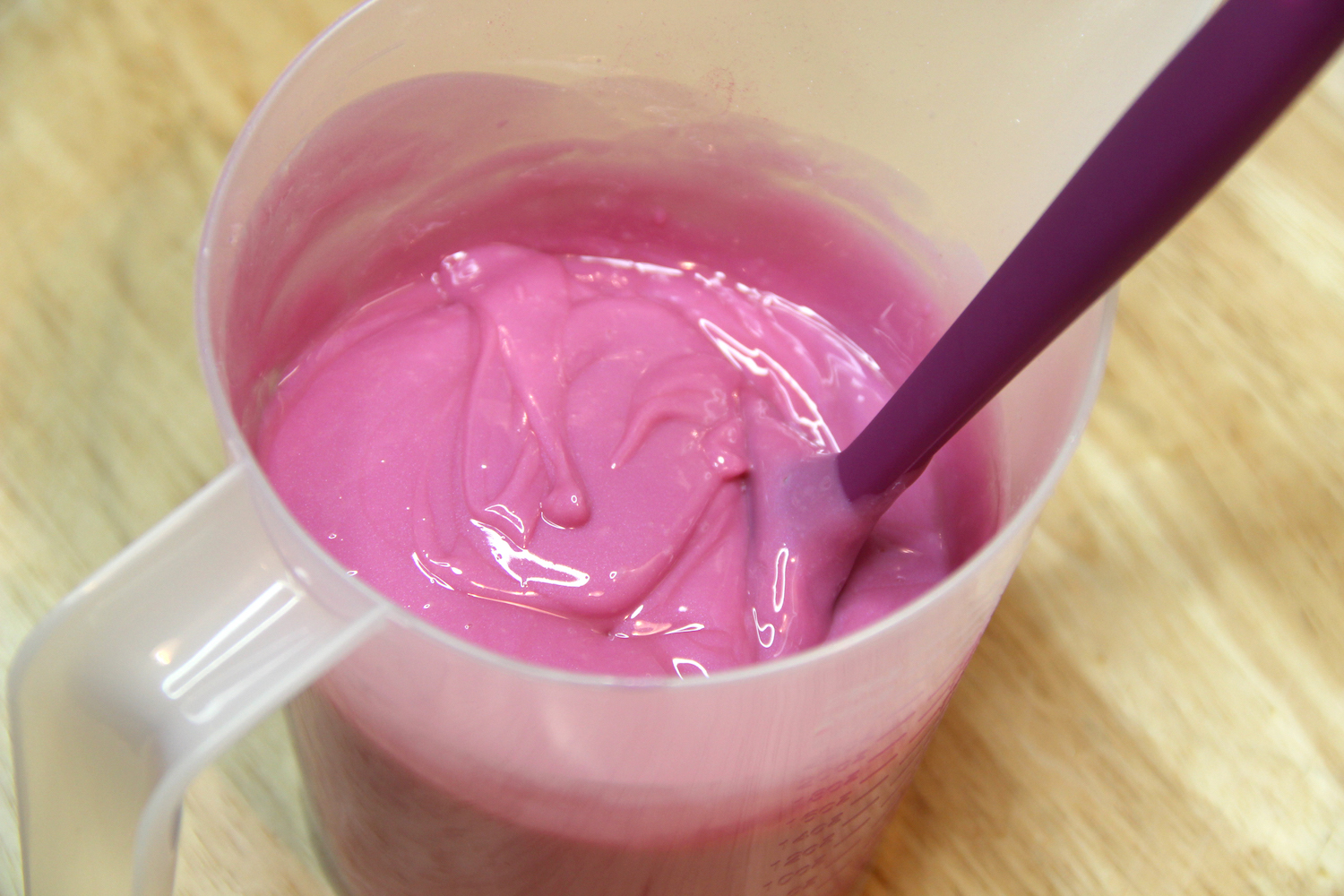
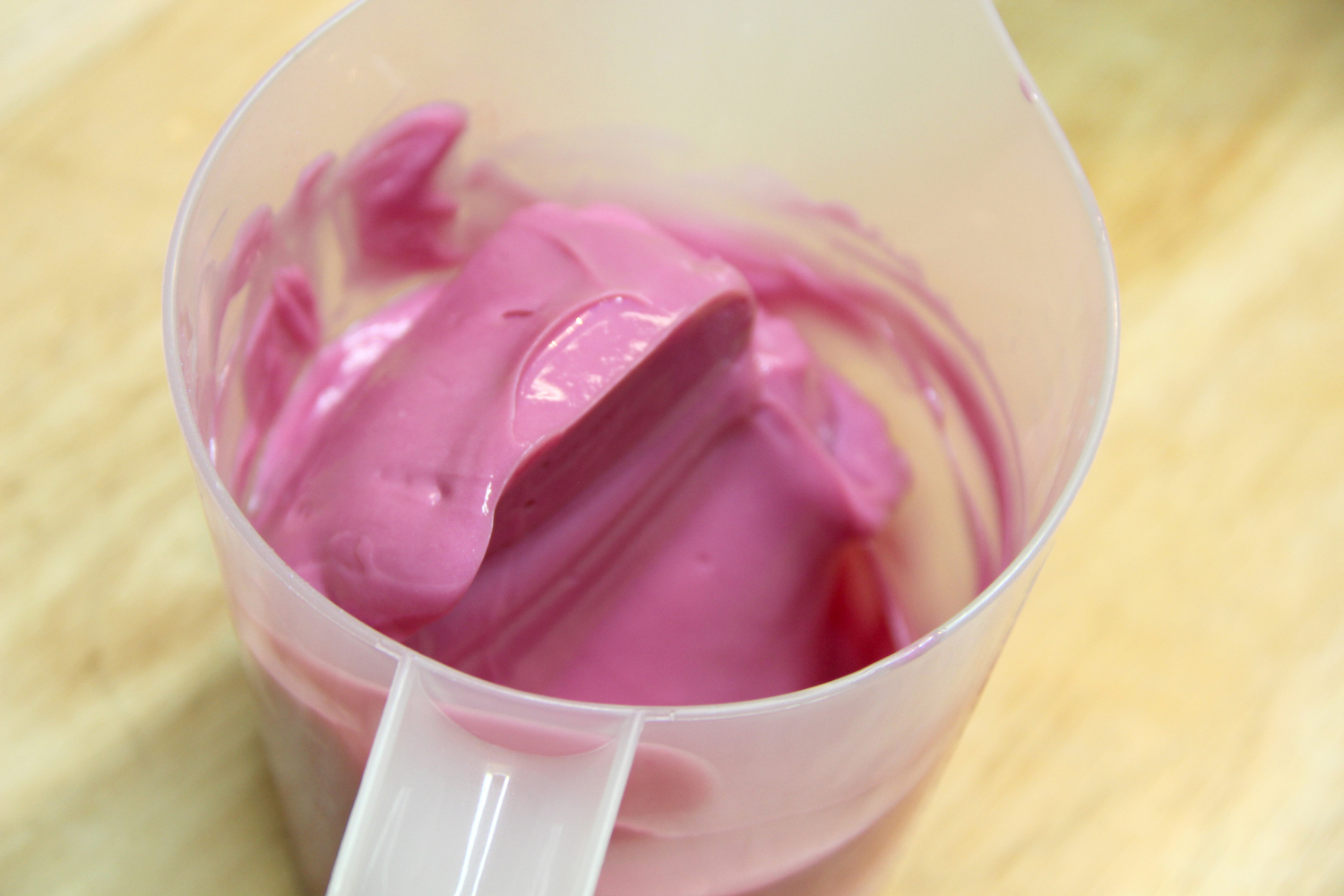
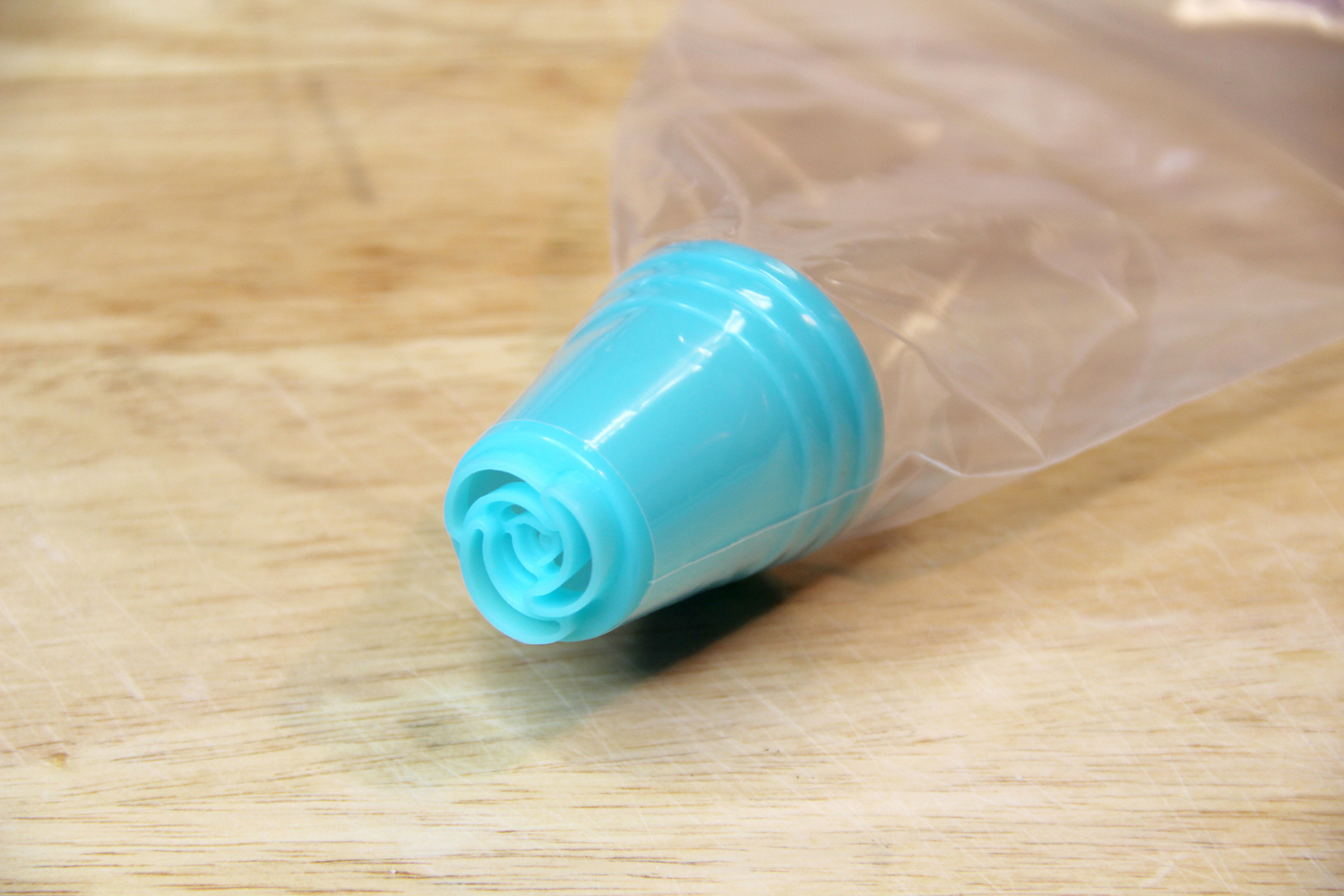
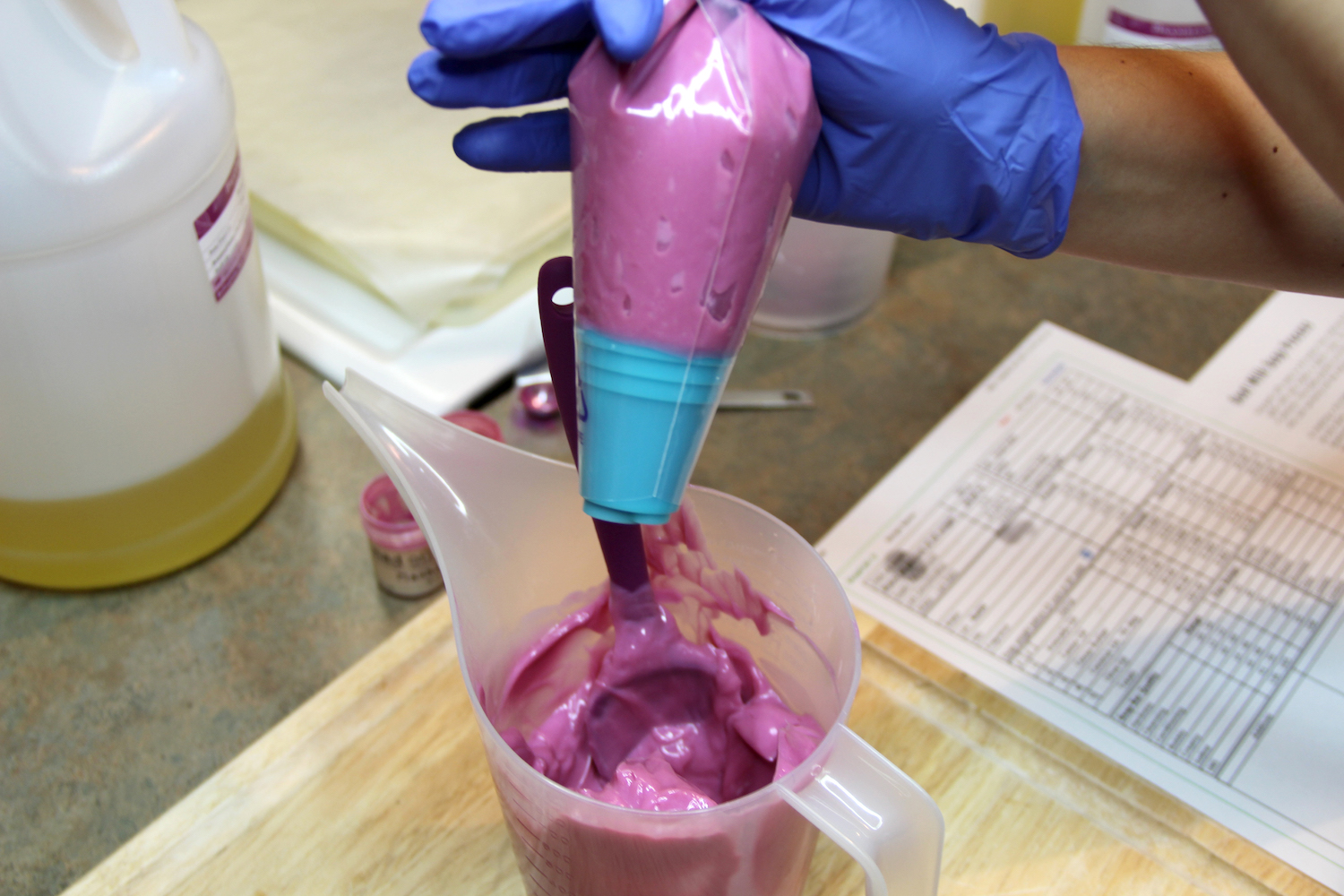
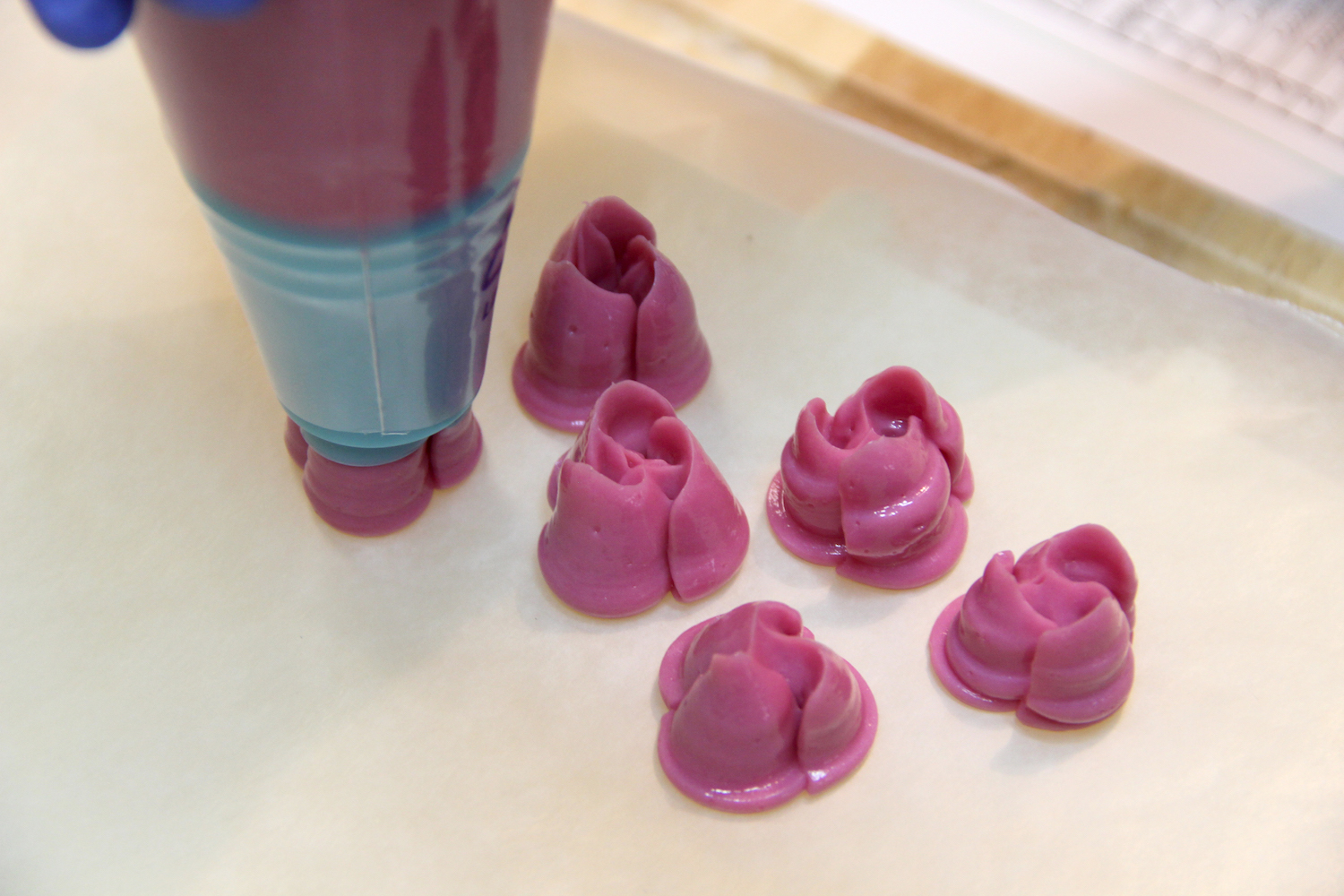



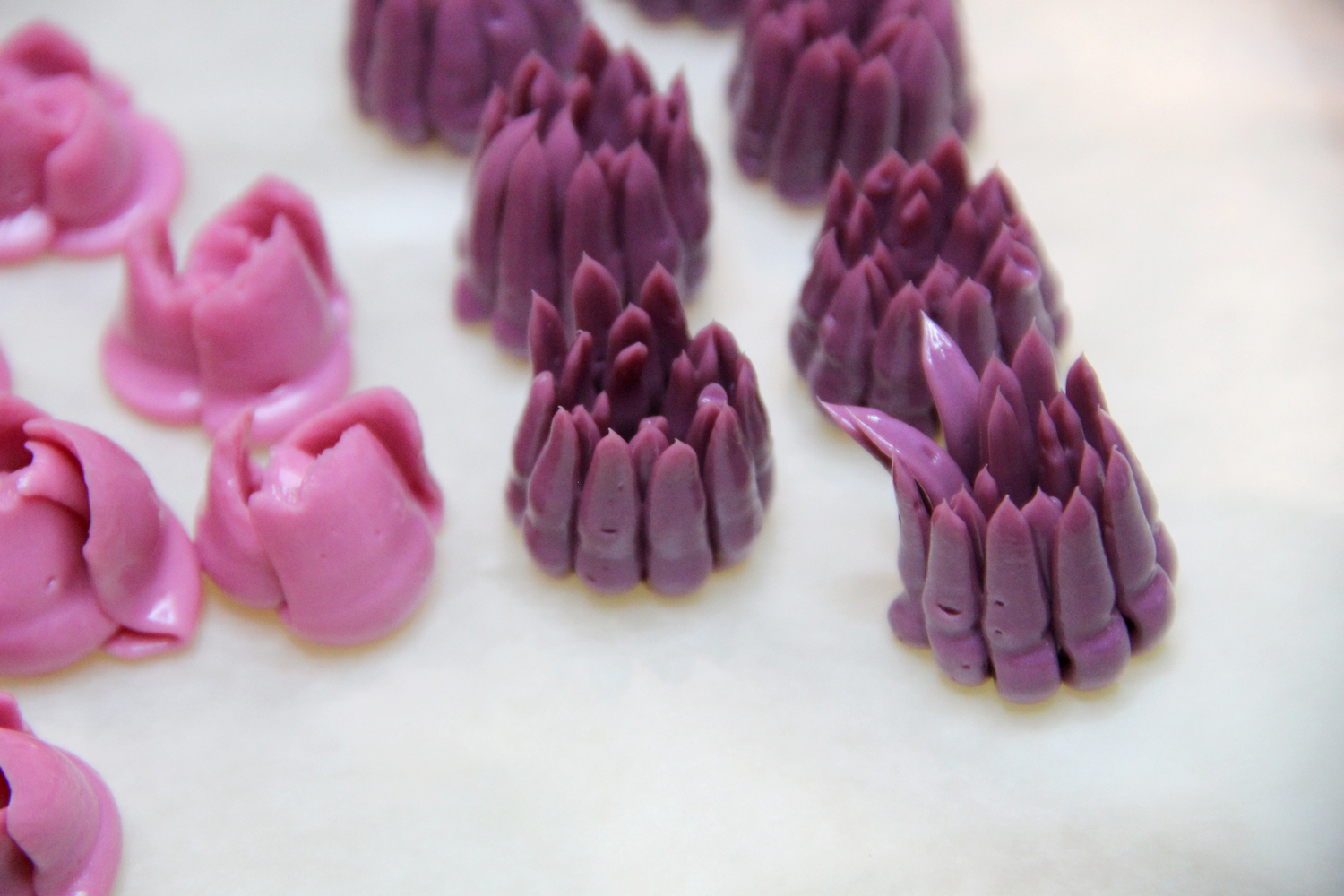
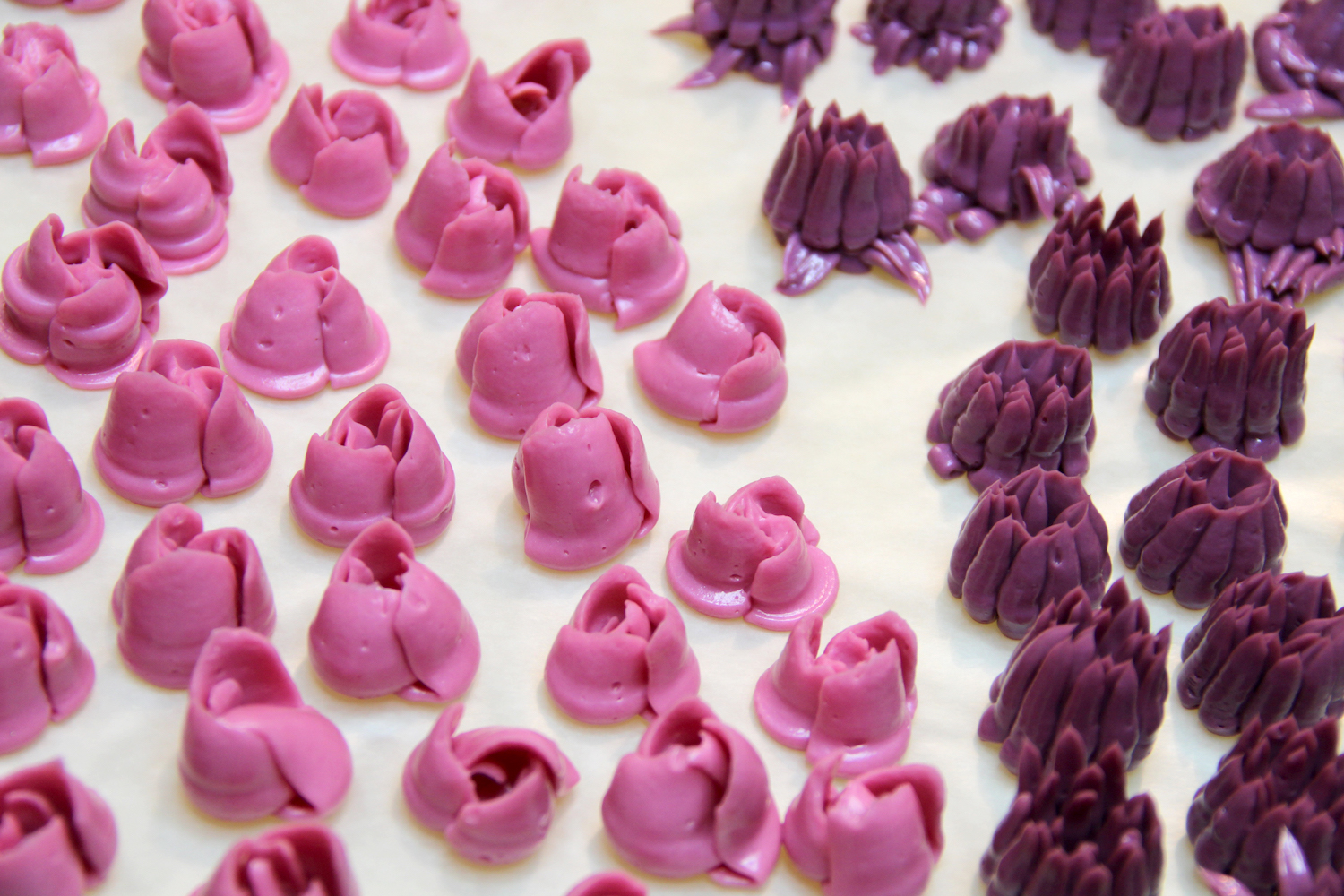
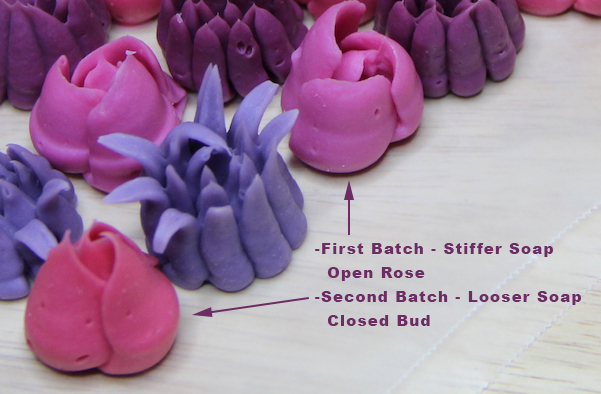
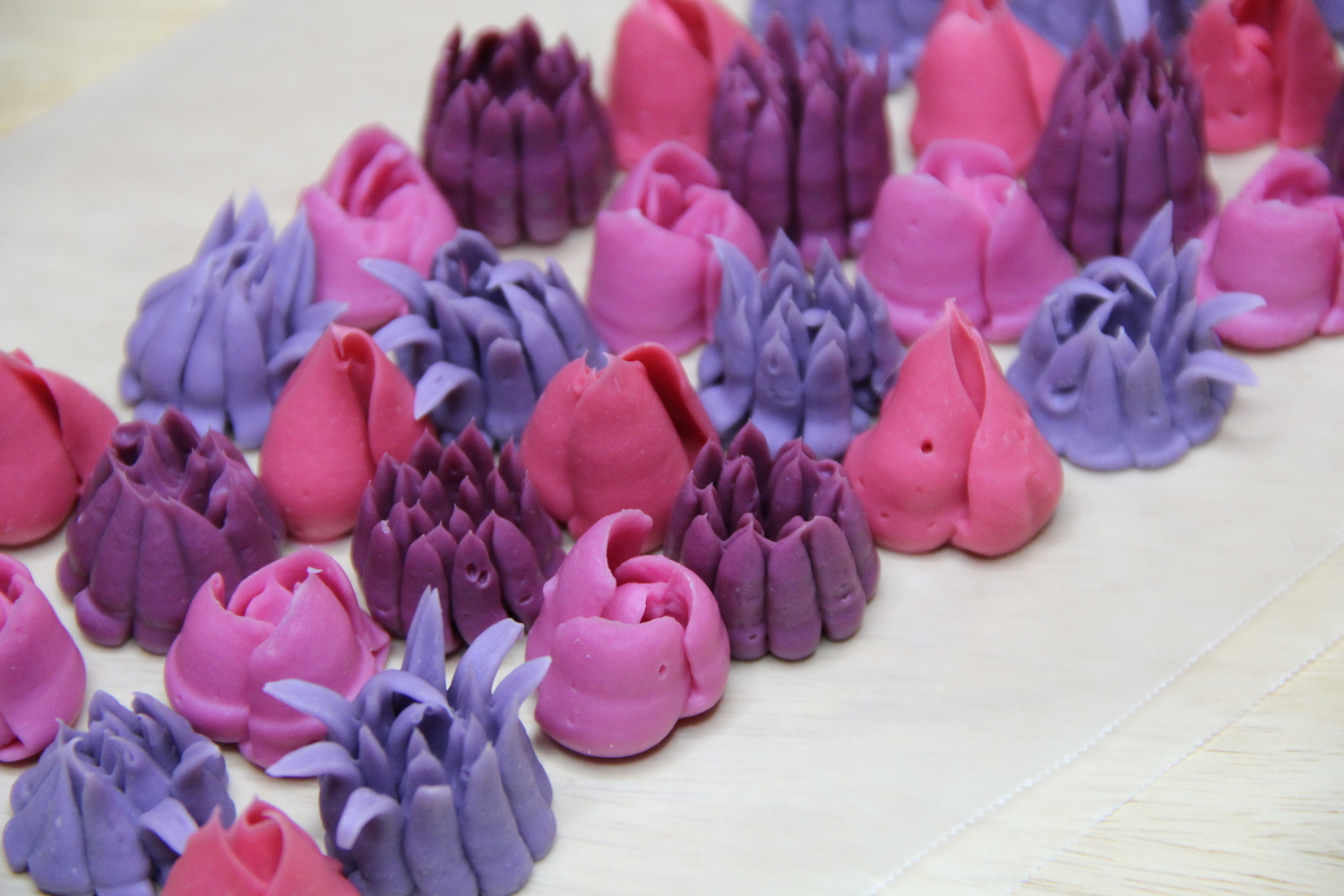

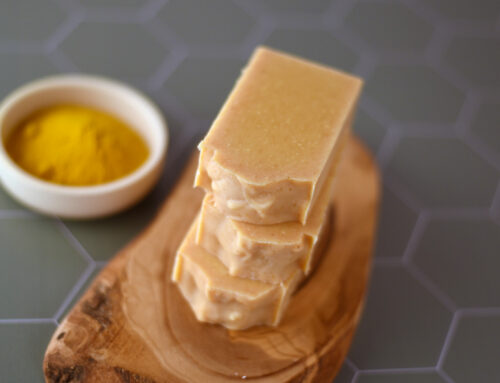
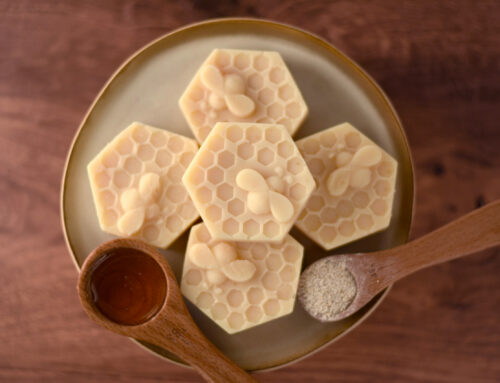
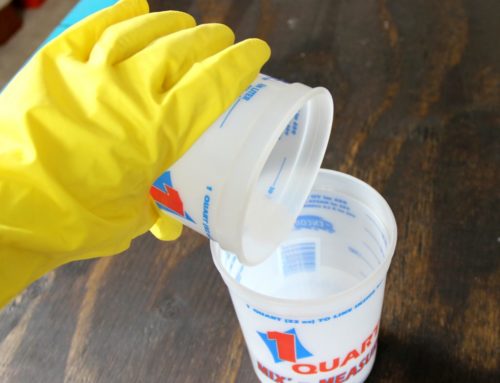

New to cold process. Can you use melt and pour flowers from molds or will they melt from the heat of cold process?
I can get the rosebuds to work fine, but not the other flower, they are don’t have the spikes! Can you give me some tips?? I tried two batches,
Thank you so much for the recipe and turorial. I’m especially excited to try this out as I recently purchased the Easy tips. Just one question, did you do a water discount? If so, what %?
Thanks, you are a great teacher and very detailed. I might have missed this I am not sure if you had mentioned. How long do you let these cure?
Nice, I will check the site for the lip this style i can use for favors. That’s for sharing.
I really enjoyed your tutorial very informative! I do have one question once the embeds are placed on the soap loaf do you try to cover it and wrap it up with towels and or blankets? Or do you just let the loaf sit out uncovered and will it go through a full gel phase uncovered. Thanks for sharing this tutorial I am a soaper of melt & pour & just started learning cold process. I watched a lot of you tube soapers but your post is the best! I wanted to see first hand how to actually put cold process embeds on soap! Thanks for sharing!
Thanks for sharing your are a great teacher
Your piped flowers turned out so nice! Thanks for the tutorial!
What a great tutorial with clear instructions. I, too, have been curious about this and just might give it a try. Can’t wait too see your finished soaps! Thanks for posting.
Great post. Thanks Amanda.
I always wondered about this, but never had the courage to try it. Thanks so much for sharing your experience. Now I need to get some of those tips!